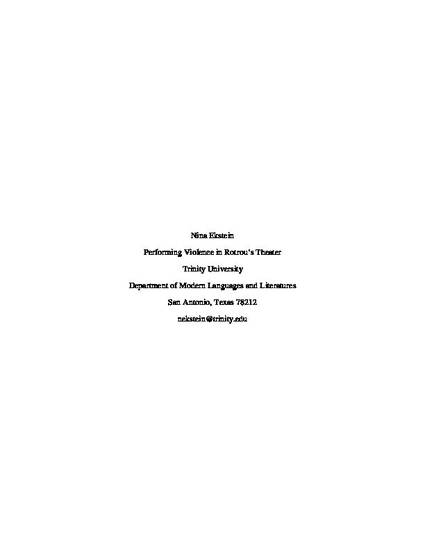
Violence has a significant and varied role in the theater of Jean Rotrou. Discord and strife are natural to the stage and violence is one of the ways such conflict may be expressed. The inherently spectacular nature of violence makes it particularly theatrical. At the same time, violence pleasingly tantalizes audiences. In this examination of Rotrou’s entire theatrical corpus, I first consider the use of “real” violence, both on stage and off. More interesting and even more common is potential violence, which includes threats of all sorts, as well as fortuitous interruptions. Potential violence avoids the serious difficulties that staging “real” violence entails; furthermore it opens the door to theatricality, as threats may be mere poses. Rotrou’s most innovative use of violence is to make of it a conscious performance on the part of his characters. Violence is thus tied to the performance of insanity, to cross-dressing, and to his fanfarons, among other elements. Finally Rotrou’s masterpiece, Le Véritable Saint Genest, reproduces the two levels of agency of violence—the playwright and his characters—while adding a third level, that of the violence represented, recounted, or threatened in the embedded play performed by Genest’s troupe. From a basic building block of dramatic spectacle and plot, Rotrou constructs a reflection on the nature of theatrical illusion.
